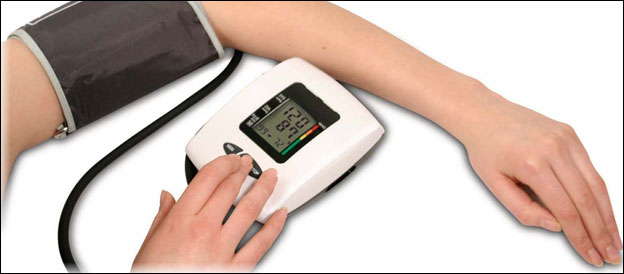Home > Low Blood Pressure
Do-it-yourself blood pressure care can beat MDs, study finds

CHICAGO – "Do-it-yourself" blood pressure measurements and medicine changes work better than usual doctor-office care in some patients, a study of older adults in England found.
Those who did their own readings at home and adjusted their medicine as needed had healthier blood pressure levels after a year than those who got standard doctors' care.
Self-care patients weren't completely on their own - any changes they made were part of a treatment plan previously OK'd by their doctors. But the patients didn't need to consult their doctors every time they increased the dose if it was part of the original treatment plan.
Why self-management worked best is uncertain, but patients who participated were taking more medication than the others and were perhaps more vigilant than doctors treating the usual-care group, the study suggests.
It's possible usual-care doctors had "clinical inertia" - a phenomenon described in other research showing that physicians often fail to increase blood pressure medication doses even when office measurements show patients' levels are too high, said study author Richard McManus, a professor and researcher at the University of Oxford.
The study was published Tuesday in the Journal of the American Medical Association.
Nearly 1 in 3 U.S. adults have high blood pressure - measuring 140 over 90 or higher - but only about half of them have it adequately controlled, according to the Centers for Disease Control and Prevention. High blood pressure rates are similar in England, health surveys there have found.
The study involved 450 patients with previous heart trouble, strokes, diabetes or kidney disease, aged 70 on average, who were followed for a year. About half got usual care; the others did self-care.
Average blood pressure measurements at the study's start were about 143 over 80. At the end, that dropped to about 128 over 74 in the self-care patients and 138 over 76 in the usual-care group.
That difference would be expected to result in a drop in heart problems or other complications," although more research is needed to evaluate long-term benefits, according to a JAMA editorial.
The researchers estimate that if the self-care group's lower levels could be sustained, they'd likely see a 30 percent reduction in stroke risk compared with the other group.
Self-monitoring blood pressure is common in some countries and in the United Kingdom, and the study notes that blood pressure monitors are widely available there, costing as little as $25 (15 pounds, 18 euros). Similarly priced home blood-pressure monitors are sold in the United States.
Some U.S. centers have tried self-management approaches although more research is needed before a program like the one studied could be widely recommended, said Dr. Laura Svetkey, a hypertension specialist at Duke University.
"I think we're moving in that direction," Svetkey said. "There's tremendous motivation to control health care costs and a parallel trend toward giving patients a bigger role in their decision-making and management."
Most patients studied were white and worked at white-collar or skilled manual labor jobs; whether similar results could be achieved with less skilled or less educated patients isn't known.
For self-care programs to work, patients need to be carefully selected, said Dr. Mary Ann Bauman, a spokeswoman for the American Heart Association. "You have to have compliant, knowledgeable patients," said Bauman, medical director for women's health and community relations at Integris Health, Inc. in Oklahoma City.
Recommend Article
 High blood pressure: How low should you go?
High blood pressure: How low should you go?
 Jobs with highest and lowest heart disease risk revealed
Jobs with highest and lowest heart disease risk revealed
 High cholesterol levels may make it harder to get pregnant
High cholesterol levels may make it harder to get pregnant
Newsletter signup
Get the updates!
Get regular updates on articles, health and fitness tips and strategies, exclusive deals and giveaways, and more!
Trending Articles
© Blood Pressure Cure.
Terms & Conditions | Privacy Policy | Contact Us | Subscribe